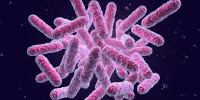Molecular Characterization and Resistance Profiling of Multidrug-Resistance Salmonella Species Isolated from Southeast Nigerian River
Main Article Content
Abstract
Water, which aids in the sustainability of life, also contributes to diseases, including Salmonella-implicated diseases, attributable to human anthropogenic activities leading to cross-contamination and transfer of multi-drug-resistant pathogens. There is however need for constant surveillance of public water. This study is aimed at molecular identification and resistance profiling of multidrug-resistant Salmonella spp. isolated from a Southeast, Nigerian River. Using water samples obtained from sites 1–8, the microbiological water quality and faecal counts were determined using the membrane filtration technique. Salmonella spp. from the sample was isolated and biochemically and molecularly characterized and the resistance profile to ciprofloxacin (5μg), chloramphenicol (30μg), amoxicillin (30μg), and streptomycin (10μg) assessed using the Kirby-Bauer sensitivity technique. The mean faecal counts according to the sampling months ranged from 35,000–45,000CFU/100ml and according to the sites, ranged from 37233.3–41900CFU/ml. The pre-identification of the isolates was done using isolates with negative results to catalase, coagulase, Voges-Proskauer, urease, oxidase and gram-stain, positive results to citrate, indole, methyl red, and alkaline/acid result to H2S. The molecular identification confirmed seven Salmonella enterica (coded M1 to M7)of different strains and subspecies. The strains showed the highest sensitivity to chloramphenicol (80%), followed by ciprofloxacin (16%). The highest resistance was recorded with amoxicillin (98%), followed by streptomycin (48%). Detected fluoroquinolone genes included QnrA, QnrSM, ParC, and gyrin some or all the isolates. The study revealed the presence of multi-drug resistant S. enterica strains in the study site, further exposing the heavy contamination in the site and informing policymaking.
Downloads
Article Details

This work is licensed under a Creative Commons Attribution-NonCommercial-NoDerivatives 4.0 International License.
References
Kacholi DS, Sahu M. Levels and health risk assessment of heavy metals in soil, water, and vegetables of Dar es Salaam. Tanzania J. of Chem. 2018; 1-9.
Karim B, Samiha K, Houzi G, Hefdhallah A, Mohamed F. Physicochemical Properties of Water Used for Irrigation of Rice (Oryza sativa) in the Gharb Plain, Morocco. Trop J. Nat Prod Res. 2022; 6(5):721-727.
Ken-Onukuba DN, Okeke OC, Amadi CC, Akaolisa CCZ, Okonkwo SI, Offoh JI, Nwachukwu HGO. Water quality assessment of Ekulu and Asata rivers in Enugu area, Southeastern Nigeria, using physico-chemical and bacteriological parameters. J. of Geog Envi and Earth Sci Intern. 2022; 11(4):70-92.
Gomez M, Perdiguero J, Sanz A. Socioeconomic factors affecting water access in rural areas of low and middle income countries. Water. 2019; 11(2):202.
Adamu I, Andrade FCD, Singleton CR. Availability of drinking water source and the prevalence of diarrhea among nigerian households. Am J. Trop Med Hyg. 2022; 6;107(4):893-897. Doi: 10.4269/ajtmh.21-0901
Adiele G, Ojeaga K, Ekhator OC, Akhionbare SO. Effects of abattoir waste discharge on the quality of the Trans-Amadi creek, Port Harcourt, Rivers State, Nigeria. Trop J. Nat Prod Res. 2019; 3(4):132-137. Doi: 10.26538/tjnpr/v3i4.5
Caterina L, Lucia B, Rossella B, Elisabeth G, Simon T, Valter T. Salmonella in surface and drinking water: occurrence and water-mediated transmission, Food Res Internat.2012; 45(2): 587-602. Doi: 10.1016/j.foodres.2011.06.037
Pal M, Merera O, Abera F, Rahman MT, Hazarika RA. Salmonellosis: a major foodborne disease of global significance. Bever and Food World. 2015; 42(12): 21-24.
Jajere SM. A review of Salmonella enterica with particular focus on the pathogenicity and virulence factors, host specificity and antimicrobial resistance including multidrug resistance. Veterin World. 2019; 12(4): 504.
Deen J, Von Seidlein L, Andersen F, Elle N, White NJ, Lubell Y. Community-acquired bacterial bloodstream infections in developing countries in south and southeast Asia: a systematic review. The Lan Infect Dis. 2012; 12(6):480-487.
Feasey NA, Dougan G, Kingsley RA, Heyderman RS, Gordon, MA. Invasive non-typhoidal salmonella disease: an emerging and neglected tropical disease in Africa. The Lan. 2013; 379(9835): 2489-2499.
Ezenwaji EE, Eduputa BM, Uwadiegwu BO. Pollution of Ekulu River in Enugu: A case of negative human impact on the environment. J. of Envi Sci, Toxicolo and Food Tech. 2014; 8(10):83-92.
Rompré A, Servais P, Baudart J, de-Roubin MR, Laurent P. Detection and enumeration of coliforms in drinking water: current methods and emerging approaches. J. Microbiol Method. 2002; 49(1):31-54. Doi: 10.1016/s0167-7012(01)00351-7.
Buchanan RE, Gibbons NE, Cowan ST. Bergey's manual of determinative bacteriology. 1974.
Hudzicki J. Kirby-Bauer disk diffusion susceptibility test protocol. Ameri Soci for Micro. 2009; 15:55-63.
Dahunsi SO, Owamah HI, Ayandiran TA, Oranusi SU. Drinking water quality and public health of selected towns in South Western Nigeria. Wat Qual Expos Heal. 2014; 6:143-153.
Ruby T, McLaughlin L, Gopinath S, Monack D. Salmonella’s longterm relationship with its host. FEMS Microbiol Rev. 2012; 36:600-615.
Oludairo OO, Aiyedun JO. Contamination of commercially packaged sachet water and the public health implications: an overview. Bang J. of Vet Medi. 2015; 13(2):73-81.
Saitou N, Nei M. The neighbor-joining method: A new method for reconstructing phylogenetic trees. Mole Biol and Evolut. 1987; 4:406-425.
Tamura K, Nei M, Kumar S. Prospects for inferring very large phylogenies by using the neighbor-joining method. Proceed of the Nat Acad of Sci (USA). 2004; 101:11030-11035.
Kumar S, Stecher G, Li M, Knyaz C, Tamura K. MEGA X: molecular evolutionary genetics analysis across computing platforms. Mol Biol and Evol. 2018; 35:1547-1549.
Andino A, Hanning I. Salmonella enterica: survival, colonization, and virulence differences among serovars. Sci World J. 2015; 52:1-79.
Chuah LO, Effarizah ME, Goni AM, Rusul G. Antibiotic application and emergence of multiple antibiotic resistance (MAR) in global catfish aquaculture. Curr Environ Healt Rep. 2016; 3:118-127.
Falodun OI, Oladimeji OS. Extended Spectrum Beta Lactamase (ESBL) producing enteric bacteria from hospital wastewater, Ibadan, Nigeria. World News of Nat Sci. 2019; (22):62-74.
Mustapha A, Imir T. Detection of multidrug-resistance gram-negative bacteria from hospital sewage in North East, Nigeria. Fron Environ Microbiol. 2019; 5(1):1-7
Alekshun MN, Levy SB. Molecular mechanisms of antibacterial multidrug resistance. J. of Cel. 2017; 128(6):1037-1050.


